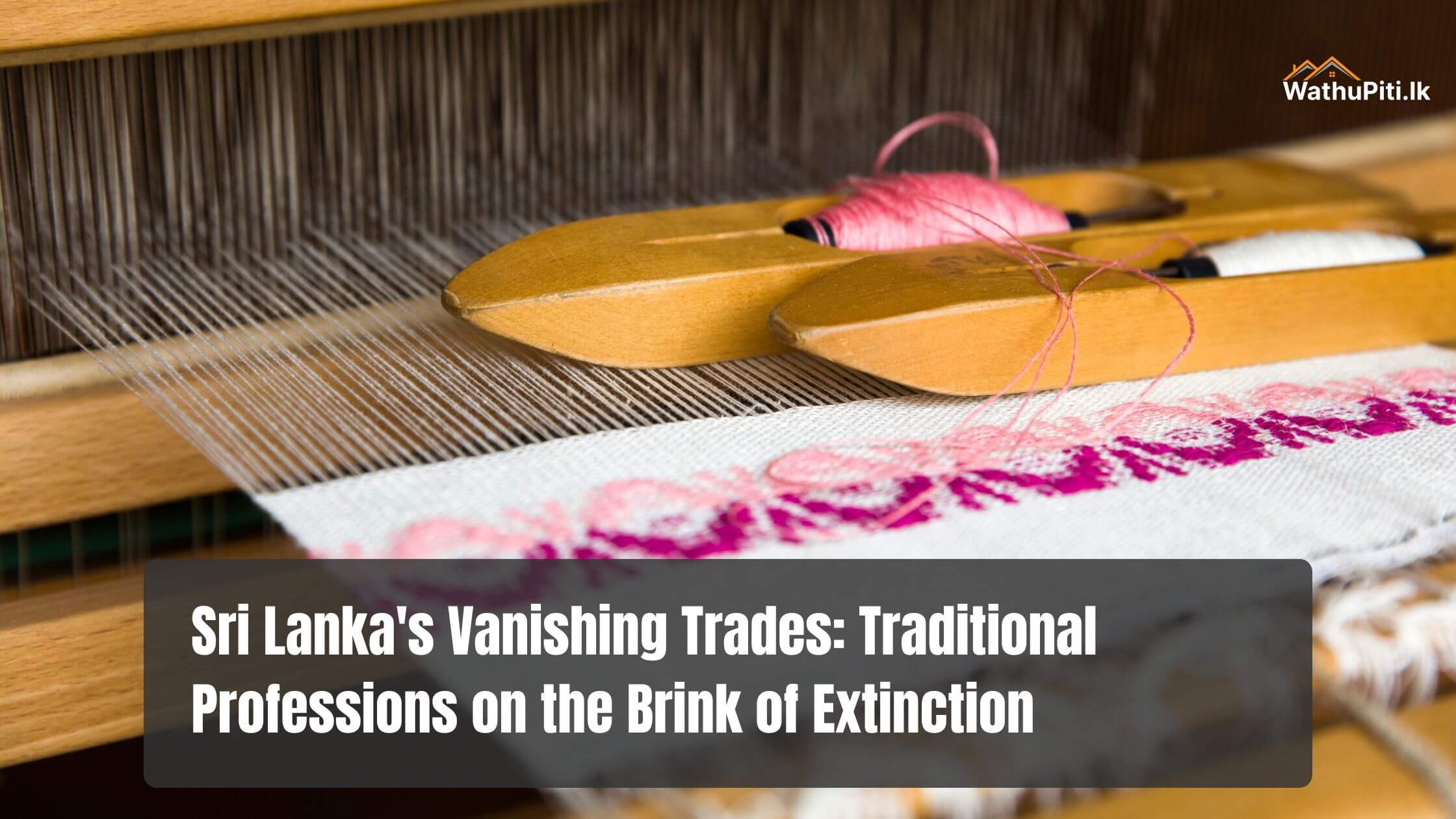
Sri Lanka’s Vanishing Trades: Traditional Professions on the Brink of Extinction
Sri Lanka is a nation steeped in culture, tradition, and history, but many of its traditional professions are in danger of dying out. As modernization and industrialization get a stranglehold, the traditional industries that were a staple of the country’s economy are struggling to survive. Here, we feature some of these dying arts and why it’s essential that we keep them alive for future generations.
1. Beeralu Lace Making
Beeralu lace making, which was brought in by the Portuguese as a craft, is a laborious art of fine hand-weaving. The craft is done mainly in the southern coastal regions, and this delicate craft is slowly dwindling with machine-made lace taking over the market. Although efforts have been made to revive beeralu lace through tourism and fashion collaborations, fewer young people are interested in learning the skill as it is time-consuming and also yields fewer monetary benefits.
2. Mat Weaving (Pan Pedura)
Mat weaving, or “Pan Pedura,” has been an integral part of Sri Lankan households for centuries. Woven traditionally from natural reeds and dyed with organic pigments, the mats are used for sitting, sleeping, and even in ceremonial purposes. But with the advent of plastic mats produced in factories, the demand for the handmade counterparts has fallen significantly, pushing this art form to the brink of extinction.
3. Handloom Weaving
Handloom weaving is another traditional craft that sustains livelihoods of many rural communities. Sri Lankan handloom textiles are famed for their vibrant colors and durability, but cannot compete with machine-woven imported material. Private companies and the government have attempted to introduce modern designs and boost exports, yet interest in the time-consuming craft continues to decline.
4. Cane and Rush Weaving
The art of cane and rush products, such as baskets, chairs, and mats, is gradually dying due to deforestation and the introduction of plastic and synthetic alternatives. Skilled artisans who specialize in this art are now faced with diminishing markets, with very few successors to carry on the tradition.
5. Traditional Pottery
Pottery has been an integral part of Sri Lankan culture, and local artisans have made everything from cookware to decorative items. However, modern kitchenware made of stainless steel, glass, and plastic has considerably reduced the use of earthen pots. As a result, pottery villages are seeing less youth opting for the trade, endangering its continuation.
6. Brass and Metal Crafting
Metal crafting and brassware have also been significant in the production of temple lamps, traditional oil lamps, and decorative pieces. Due to higher raw material prices and reduced local demand, it has become difficult for artisans to sustain the craft. The younger generation is also moving away from such jobs in search of more lucrative employment.
7. Drum Making
Sri Lanka’s rich musical tradition relies on traditional drums like the “Geta Beraya” and “Thammattama,” which are handmade using special techniques. The art of drum-making, traditionally passed from generation to generation, is currently under threat with the advent of factory-produced musical instruments and changing cultural trends.
8. Toddy Tapping
Toddy tapping, wherein the sap is collected from coconut or palmyra trees to make toddy (a local alcoholic beverage), was a thriving occupation. The practice is now on the decline due to government prohibitions, changing lifestyles, and a shortage of experienced tappers willing to undertake the physically demanding job.
Why Do We Need to Save These Trades?
It is vital to conserve traditional crafts in order to protect Sri Lanka’s unique cultural identity. Besides providing a livelihood for rural communities, these trades also provide sustainable and eco-friendly practices. These trades can be helped by tourism, policy support from the government, and modern design interpretations in order for them to survive.
How Can We Support These Trades?
Marketing Handcrafted Produce: Encouraging consumers to choose handmade products over mass-produced ones.
Training and Education: Imparting vocational training to the next generation to carry on these skills.
Government Support: Implementing policies that provide financial assistance and market access to artisans.
Tourism and Exports: Marketing traditional crafts in tourist spots and exporting them to international markets.
The survival of Sri Lanka’s dying crafts needs collective efforts from individuals, businesses, and policymakers. By appreciating and patronizing these crafts, we can ensure that these centuries-old traditions will be part of our cultural heritage for future generations.


